Click the “Smart Dog” above to follow us
As early as the end of 2014, there were rumors in the industry that Xiaomi was going to develop its own processor (SoC). On February 28, 2017, the mysterious Pinecone processor finally stepped into the spotlight, introduced under the name “Surge,” and the legendary V670 became the Surge S1.
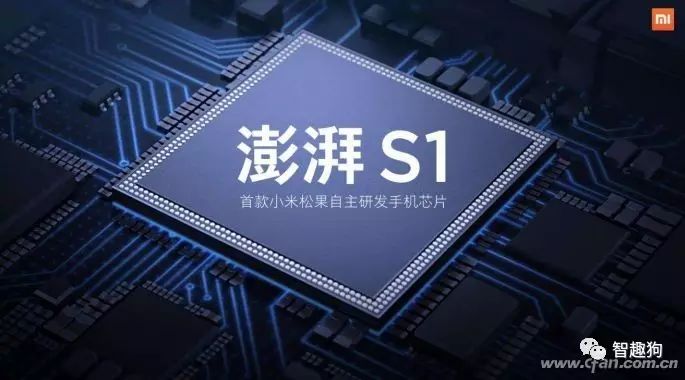
So, why did Xiaomi launch the Pinecone processor? Can the performance of the Surge S1 meet our expectations?
Concerns Behind Xiaomi’s Halo
Let’s rewind to 2014. That year, the shipment of the Redmi series smartphones had already exceeded 50 million units. While the world marveled at Xiaomi’s achievements, Xiaomi itself began to reflect: the half a billion sales of Redmi phones did not bring the expected profit revenue. According to a document submitted by Xiaomi to the Shenzhen Stock Exchange that year, its gross profit margin was only 1.8%, far behind the 10% or higher margins of OPPO, vivo, and Huawei during the same period.

The Redmi 2A was equipped with a processor from Leadcore Technology, which can be seen as a precursor to the Pinecone processor.
Poor gross profit makes it difficult for Xiaomi to support its strategic shift from online to offline, and it cannot compete with rivals in advertising and marketing. As a result, OPPO and vivo, which have focused on offline sales, advertising, and marketing, have rapidly risen in the past two years, while Xiaomi has been troubled by supply shortages: let’s recall the Xiaomi 5 launched in 2016, which faced nearly three months of production capacity crisis due to other brands like LeEco “snatching” many Snapdragon 820 orders from Qualcomm.
While the Redmi series was troubled by gross profit, the Xiaomi series was worried about insufficient chip supply. These are the hidden concerns behind Xiaomi’s halo. In fact, Xiaomi had realized this issue long ago and proposed a solution—developing its own processors: reducing costs and increasing profits in the mid-to-low-end market, enhancing bargaining power with Qualcomm and MediaTek, and alleviating supply pressure from third-party chip procurement.
Thus, Xiaomi established Beijing Pinecone Electronics Co., Ltd. on October 16, 2014, and after two years of dedicated development, it finally submitted its first product—the Surge S1 for mass production in December 2016, officially released on February 28, 2017, and subsequently made its debut with the Xiaomi 5C.
By the way, what is Pinecone?
Before analyzing the Surge S1 processor, let’s first get to know Beijing Pinecone Electronics Co., Ltd. In 2014, Xiaomi, in collaboration with Leadcore Technology, a subsidiary of Datang Telecom, invested in the establishment of Beijing Pinecone Electronics Co., Ltd. and authorized the SDR1860 platform technology developed and owned by Leadcore Technology to Beijing Pinecone Electronics Co., Ltd. for 103 million yuan (approximately $15 million). It can be said that Xiaomi took a shortcut to “chip-making” by partnering with Leadcore (Datang), bypassing the R&D threshold for processors, shortening the design cycle, and achieving mass production in just 28 months from project initiation.
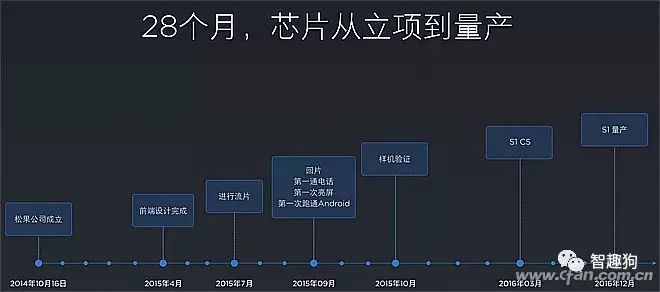
How Impressive Are the Specifications of the Surge S1?
We all know that the key parameters affecting smartphone processor performance include process technology, core architecture, and the integrated GPU model. Therefore, let’s start from these three points to examine the specifications of the Surge S1.
The launch timing of the Surge S1 is relatively awkward, as it is caught between the old and new processors of other brands. The table below compares the specifications of the Surge S1 with four other smartphone processors of similar positioning, including MediaTek’s Helio P10, P20/P25, Kirin 955, and Snapdragon 625/626.
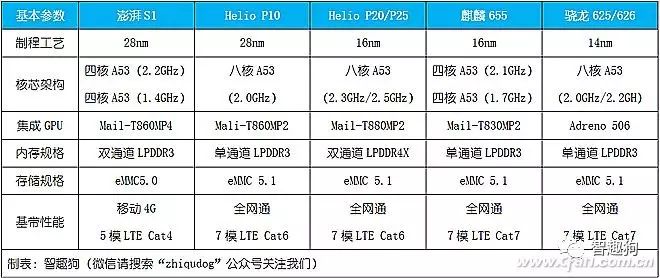
Process Technology
In terms of specifications, the Surge S1 is closest to MediaTek’s Helio P10 (MT6755), both using the relatively outdated 28nm HPC+ process technology. So, why couldn’t the Surge S1 choose a more advanced 16nm or 14nm process?
The reasons are multifaceted. For example, the project initiation time of the Surge S1 was relatively early, and it had not yet “caught up” with the new process. A more important factor is that the resources for the 16nm and 14nm processes are controlled by TSMC and Samsung, and the production capacity of these processes has basically been “divided up” by chip manufacturers like Apple, Qualcomm, MediaTek, Samsung, and HiSilicon, leading to a very tight supply chain. If Pinecone also wanted to use this advanced process, it would be uncertain whether the actual production capacity could meet the supply demands of the Xiaomi 5C.
Therefore, Pinecone had to settle for the most mature production solution available from domestic semiconductor manufacturers: 28nm, which could meet the cost, capacity, and yield requirements for the Surge S1’s use in the Xiaomi 5C. As the debut of the Pinecone processor, stability was the top priority.
Core Architecture
Due to the 28nm process and Pinecone’s mid-to-low-end positioning for the Surge S1, this processor ultimately chose a relatively conventional Cortex-A53 architecture focused on energy efficiency, employing a big.LITTLE architecture design consisting of four high-frequency Cortex-A53 cores and four low-frequency Cortex-A53 cores.
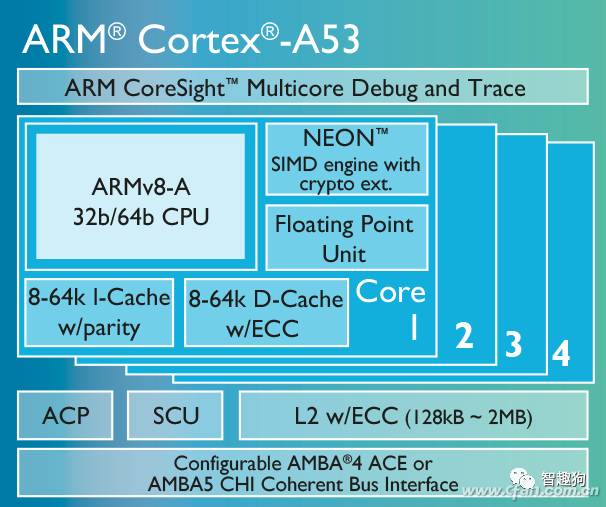
Among the competitors of the Surge S1, MediaTek’s Helio P10/P20 and Qualcomm’s Snapdragon 625 all adopt an octa-core Cortex-A53 architecture design with the same frequency. From this perspective, the Surge S1 is actually closest to the Kirin 655. The good news is that Pinecone set a maximum frequency of 2.2GHz for the Surge S1, which should be considered the limit that can be “controlled” by the 28nm process. The relatively high frequency raises our expectations for the performance of the Surge S1, but it also raises concerns about whether it will experience thermal throttling.
Integrated GPU
Except for Qualcomm, which has its own GPU technology, other chip manufacturers can only sign licensing agreements between ARM and Imagination, meaning they either integrate ARM Mali series GPUs or switch to Imagination’s PowerVR family GPUs. Pinecone’s choice is ARM, specifically the “sub-flagship” from the ARM Mali-T800 series—the Mali-T860.
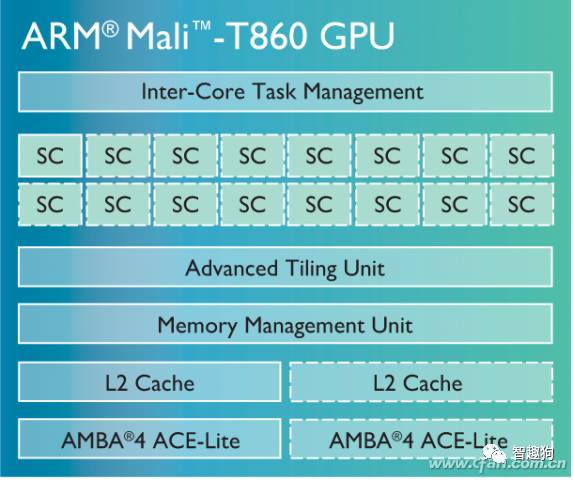
We should be familiar with the Mali-T860, as MediaTek’s Helio P10, which was launched in 2016, also integrated this GPU. However, MediaTek paired the Helio P10 with a dual-core Mali-T860, specifically the Mali-T860MP2, to balance power consumption and heat generation. In contrast, Pinecone prepared a quad-core Mali-T860 for the Surge S1, specifically the Mali-T860MP4.
As for why it didn’t pair with the flagship Mali-T880 from ARM? Like the 2.2GHz frequency, the four computing cores of the Mali-T860MP4 are also the limit that the 28nm process can handle; pushing for the Mali-T880 would inevitably face the risk of thermal throttling. The good news is that the quad-core Mali-T860MP4 is not inferior to the dual-core Mali-T880MP2; this reflects the attitude of the Surge S1 in selecting a GPU, trading quantity (cores) for quality (performance).
Other Specification Differences
As an SoC, the Surge S1 integrates numerous modules (chips) beyond the CPU and GPU, including memory/storage controllers, communication baseband, ISP image processors, and DSP digital signal processors. Although the impact of these SoC “bundled” modules on performance is not as direct as that of the CPU and GPU, they still manifest in user experience.
Pinecone’s Surge S1 has a mixed bag in terms of these non-core module configurations.
The good news is that although the Surge S1 is positioned in the mid-to-low-end, its memory controller supports dual-channel LPDDR3, which is only surpassed by MediaTek’s latest Helio P20 series among its competitors; even the Snapdragon 625 remains at the single-channel LPDDR3 stage.
Additionally, as the debut of the Pinecone processor, the Surge S1 includes all the necessary features: it integrates two 14-bit dual-core ISP processors, laying the foundation for future dual-camera setups; the independent DSP supports features including high-definition voice (VoLTE) and dual-microphone noise reduction, enhancing various voice call functionalities; and it supports Xiaomi’s Surge fast charging technology, with a maximum fast charging power of 9V/2A (18W).
The downside is that the integrated baseband chip specifications of the Surge S1 are quite average, only supporting 5-mode LTE Cat.4, lacking support for “full network access,” dual-carrier aggregation, and MIMO, with a maximum downlink speed of only 150Mbps. In comparison, the bundled basebands of other processors have reached 7-mode LTE Cat.6 or even Cat.7 (supporting 4G+, with a maximum downlink speed of 300Mbps). According to the specifications on the official Xiaomi 5C website, the network standards supported by the Surge S1 are GSM/TD SCDMA/TDD LTE, which translates to only supporting China Mobile’s 4G and compatible with China Unicom’s 2G.
Although the official claims that the Surge S1’s baseband is a programmable modem that can enhance network performance and expand supported networks through firmware upgrades, the specific upgrade timeline has not been disclosed. In fact, when the Xiaomi 5C was just launched, there were already rumors online about methods to unlock China Unicom’s 4G: entering “*#*#1#*#*” in the dial interface to access the Pinecone Assistant interface, and setting the 5 modes in the TEL assistant would allow support for China Unicom’s 4G.
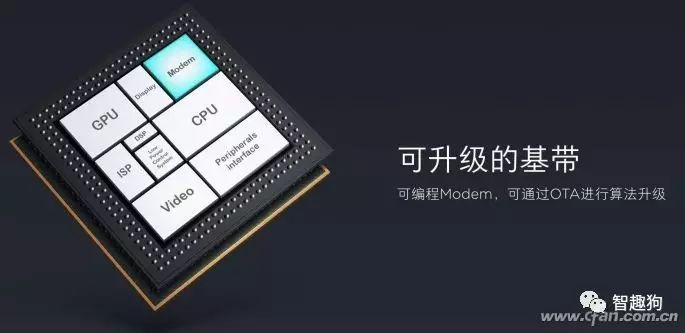
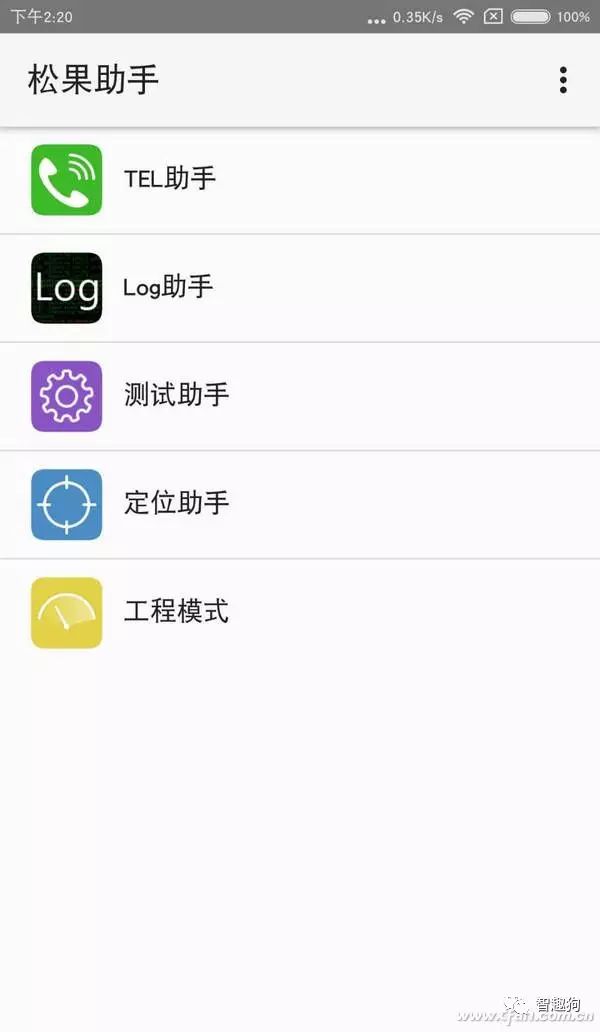
Does this method of unlocking look familiar? That’s right, many mobile 4G phones equipped with MediaTek MT6595 (like Meizu MX4) could unlock China Unicom’s 4G through flashing and other methods a few years ago. There were even many activation tools for China Unicom’s 4G online, allowing many China Mobile-customized phones to “switch sides” to the China Unicom 4G camp.
As for why the Surge S1 does not directly support China Unicom’s 4G? This may involve issues such as patent fees, operator subsidies, or the need for network stability adjustments. However, the current limitation of the Xiaomi 5C to only support China Mobile’s 4G (with the ability to unlock China Unicom’s 4G) is undoubtedly the biggest flaw in the overall specifications of the Surge S1.
The True Performance of the Surge S1: Mixed Results
In theoretical testing software, the Surge S1 performs impressively, with multi-core CPU performance surpassing that of the Helio P10 and Snapdragon 625, and GPU performance is even more remarkable. The reason is that the Surge S1 has a maximum frequency of 2.2GHz, and the quad-core Mail-T860MP4 GPU is powerful enough.
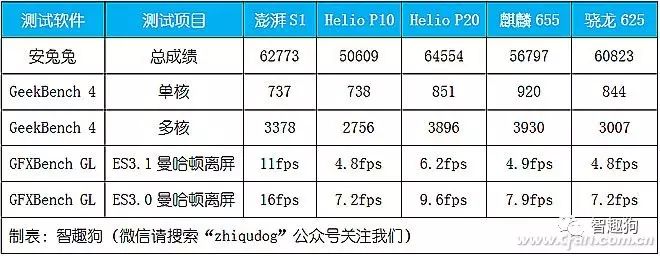
However, theory is just theory; when running mainstream apps and casual games in WeChat, even the Helio P10 is “overpowered”.
The real performance in gaming is the key point we should pay attention to.
There was a player who compared the Xiaomi 5C (Surge S1) and Redmi Note 4X (Snapdragon 625) using the game “NBA 2K16” at a room temperature of 25°C. During the 20-minute gaming session, the Redmi Note 4X achieved an average frame rate of 43fps, with a minimum frame rate reaching 20fps; while the Xiaomi 5C’s average frame rate was only 20fps, with the minimum frame rate dropping to single digits.
Indeed, this is the Surge S1 hitting the “thermal wall” while running “NBA 2K16,” causing the CPU and GPU to throttle and resulting in stuttering during gameplay.
It is evident that the 28nm process struggling to handle the 2.2GHz frequency of the Cortex-A53 and Mail-T860MP4 is somewhat challenging, and users who enjoy gaming should choose a more breathable case for the Xiaomi 5C.
In fact, we have seen similar cases more than once. The Snapdragon 652 (28nm) has theoretical performance that can easily surpass the Snapdragon 625, but due to the former’s relatively outdated process, it is prone to thermal throttling, making stuttering during actual gaming more noticeable. In summary, the more advanced the process, the more stable the frame rate performance in actual gaming; while outdated processes lead to significant fluctuations in frame rates, and I believe everyone has already drawn their conclusions on which is better.
How to View the Debut of the Pinecone Processor?
As the first mass-produced processor from Pinecone, the Surge S1’s performance is still commendable; it has packed the strongest possible CPU (high frequency) and GPU based on existing mature processes, and aside from the slightly weak baseband specifications, other configurations and features are also noteworthy.
However, due to the limitations of the 28nm process, the Surge S1 still faces the risk of thermal throttling during full-speed operation, which is definitely not good news for users who enjoy playing large games on their phones. It is worth noting that the Xiaomi 5C, priced at 1499 yuan, is not exactly cheap; for the same price, we could already buy a plethora of phones equipped with Snapdragon 625 or even Snapdragon 820.
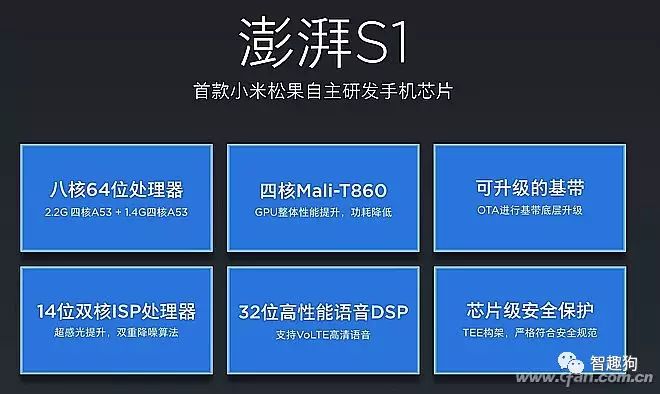
However, we should maintain a tolerant attitude towards the slight regrets regarding the Surge S1.
Back then, Huawei phones were criticized by many users for using the Hisilicon K3V2 processor (which had issues with overheating and poor game compatibility). However, without the K3V2’s accumulation, there would be no subsequent explosive growth of the Kirin 920/950/960.
The success of Huawei phones today is closely tied to the rise of its self-developed processor technology. So, with the Surge S1 paving the way, can the Pinecone processor contribute to Xiaomi’s future? Let’s wait and see.
After reading this article, 99% of readers also clicked:


Click below “Read the original text” for more.